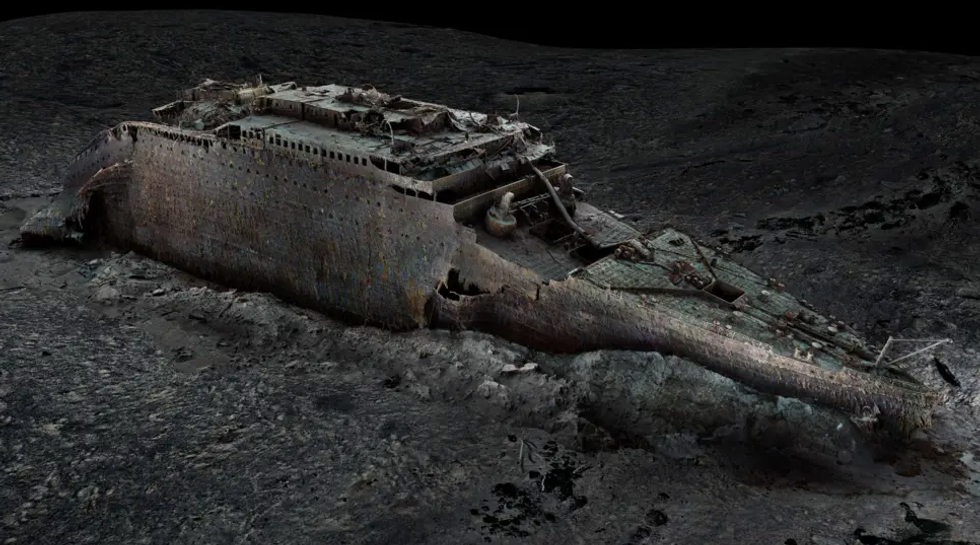Gregory Robinson
Apr 14, 2025
What Was The Titanic Menu Like?
Bright Side - Vertical / VideoElephant
The first ever full-sized 3D scan of the Titanic wreckage has revealed details about the ship’s final hours.
The ocean liner hit an iceberg on 14 April, 1912 and sank while on a voyage from Southampton, England, to New York City, USA. An estimated 1,500 people on board died and now the wreckage lies approximately 12,500 feet below sea level in the North Atlantic Ocean.
Analysts have used the scan to corroborate details that were only known from eyewitness accounts from survivors. Underwater robots were used to map the wreckage and the 3D model created consists of 700,000 images taken from every angle.
Some of the massive ship’s boilers - which produced steam to power many of its basic functions - were concave at the time it sank, suggesting they were still running when it plunged into the water.
A valve on the deck of the stern was found in the open position, which suggests that steam was still powering the electrical system of the Titanic.

The findings support accounts from witnesses who said the ship’s engineers were still shovelling coal into its furnaces to keep the lights on for as long as possible while passengers escaped.
"They kept the lights and the power working to the end, to give the crew time to launch the lifeboats safely with some light instead of in absolute darkness," Titanic analyst Parks Stephenson, told the BBC before mentioning that all of the engineers lost their lives.
The iceberg that the ship collided with caused six small tears in the hull the size of A4 pieces of paper. Titanic was supposed to be “unsinkable” and was designed to stay afloat even if four of its water compartments flooded, the same outlet reports.
- YouTubewww.youtube.com
"The difference between Titanic sinking and not sinking are down to the fine margins of holes about the size of a piece of paper," associate lecturer in naval architecture, Simon Benson, told the BBC.
"But the problem is that those small holes are across a long length of the ship, so the flood water comes in slowly but surely into all of those holes, and then eventually the compartments are flooded over the top and the Titanic sinks."
The 3D scan is studied in a new documentary, Titanic: The Digital Resurrection, which is streaming now on Disney+ and Hulu.
You should also read:
- The surprising reason why there are no human remains in the Titanic
- Final messages from Titanic submersible capture craft's tragic last moments
Sign up for our free Indy100 weekly newsletter
How to join the indy100's free WhatsApp channel
Have your say in our news democracy. Click the upvote icon at the top of the page to help raise this article through the indy100 rankings
Sign up for our free Indy100 weekly newsletter
How to join the indy100's free WhatsApp channel
Have your say in our news democracy. Click the upvote icon at the top of the page to help raise this article through the indy100 rankings
Top 100
The Conversation (0)














